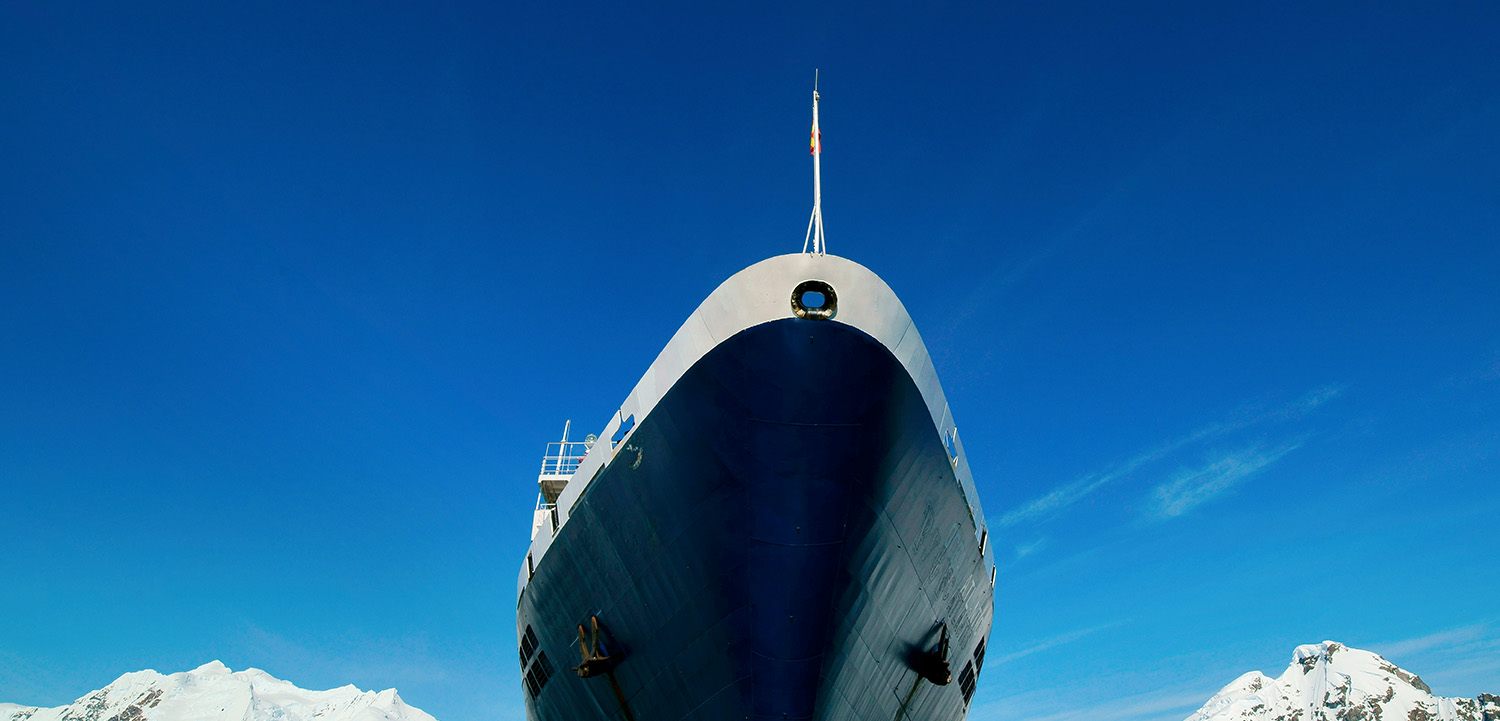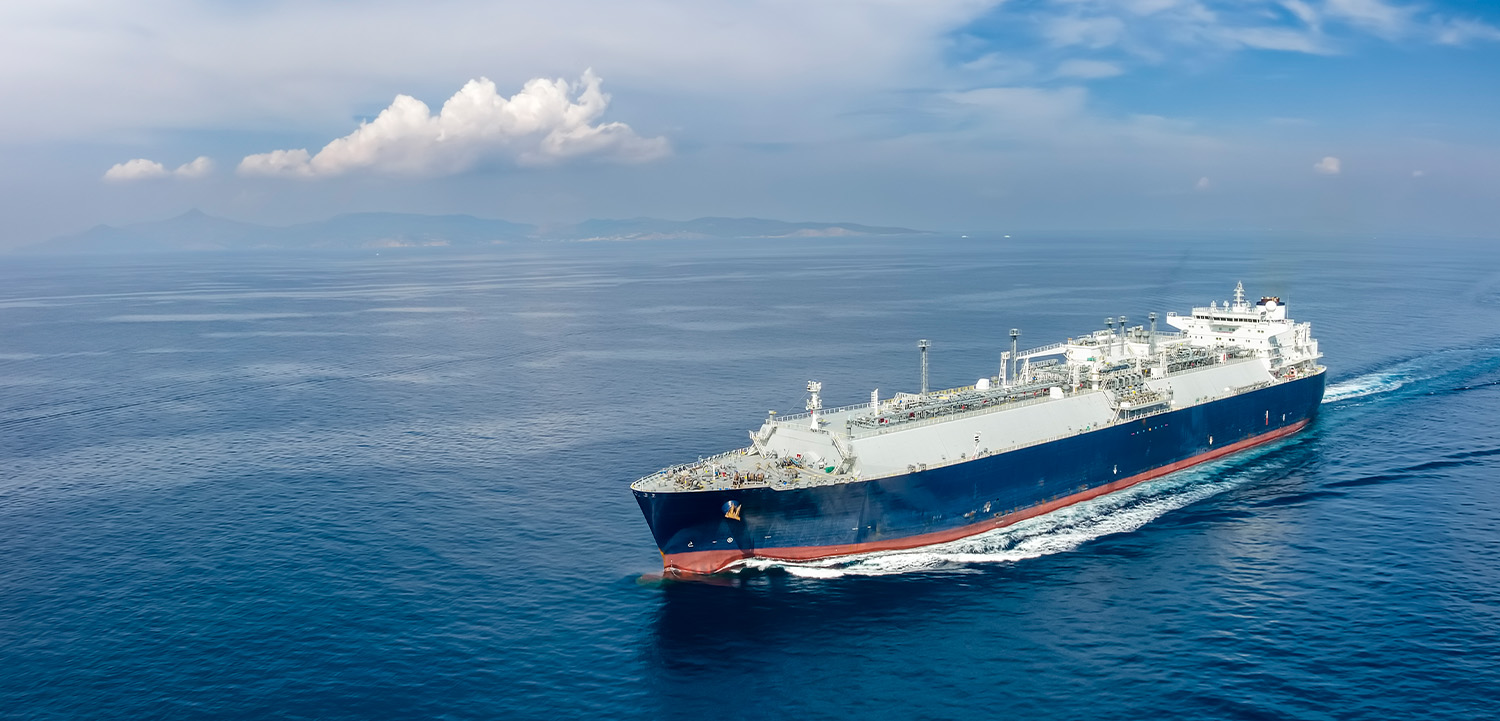Interview
KR Decarbonization Magazine
VOL.09 | WINTER 2024
Interview with Hyundai Glovis
LEE Won, HYUNDAI GLOVIS End to End Integrated Strategy Team Team Leader

|

Q. Hyundai Glovis established End to End Integrated Strategy Team to advance decarbonization and enhance future competitiveness. Could you briefly introduce this initiative?
A Hyundai Glovis has taken a significant step toward securing sustainability in the shipping industry by establishing the End to End Integrated Strategy Team.
This team plays a pivotal role in developing effective strategies to optimize logistics from a comprehensive, end-to-end perspective. Its scope encompasses global logistics, supply chain management (SCM), inland transportation, storage, and customs clearance at the point of origin, as well as sea, air, and rail transportation, along with customs clearance, storage, and inland transportation at the destination. Moreover, from this end-to-end perspective, the team supports the development of eco-friendly carbon-neutral implementation strategies, emissions management, and responses to customer needs related to carbon emissions.
According to the Net-Zero Special Report published in 2023, Hyundai Glovis declared its goal of achieving Net-Zero by 2045, five years ahead of the IMO’s 2050 target. Could you explain the roadmap Hyundai Glovis has developed to achieve this?
A To achieve carbon neutrality in our shipping division by 2045, we have established two core strategies supported by a detailed roadmap. These strategies adopt a gradual and systematic approach to reduce carbon emissions in stages and ultimately realize carbon neutrality.
Hyundai Glovis’s key strategies are the following two:
1) Enhancing energy efficiency in vessel operations to reduce fuel
consumption and minimize carbon emissions.
2) Transitioning to eco-friendly fuels to decrease reliance on conventional
fossil fuels and accelerate decarbonization.
Moreover, we have designed a detailed roadmap divided into shortterm, mid-term, and long-term phases to enhance the execution of these strategies.
Short-term (2024–2030) l During this period, Hyundai Glovis plans to actively adopt LNG dual-fuel propulsion ships to achieve initial carbon emission reductions. Simultaneously, we will utilize digital navigation optimization technologies to establish efficient shipping routes and maximize energy efficiency through optimized vessel speeds. Additionally, we aim to validate the feasibility of alternative fuels through pilot projects using biofuels and assess their potential for future application.
Mid-term (2031–2040) l In the mid-term phase, Hyundai Glovis intends to introduce vessels powered by carbon-free fuels, such as ammonia and hydrogen, increasing the proportion of eco-friendly ships in its fleet. Furthermore, we will work on establishing infrastructure at major ports to utilize renewable energy, aiming to reduce carbon emissions not only from ships but also during port operations.
Long-term (2041–2045) l By 2045, Hyundai Glovis aims to fully transition its fleet to be powered by LNG and ammonia-based fuels. This will enable us to achieve carbon neutrality in our shipping division, which currently accounts for 97% of total emissions.
Q. Could you tell us about energy saving technologies that Hyundai Glovis is using as short-term measures for decarbonization?
A We are proactively pursuing and adopting a variety of energy-efficient technologies for our vessels. By leveraging IT solutions, we monitor and assess vessel performance, which allows us to identify and implement tailored strategies. Our energysaving initiatives can be broadly divided into operational and technical measures.
For operational measures, we are utilizing Weather Routing services to optimize sailing routes and piloting autonomous navigation assistance systems to enhance both safety and efficiency during voyages.
On the technical side, we apply low-friction coatings to reduce hull resistance, conduct hull cleaning, and polish propellers. These actions help remove contaminants from the hull, improve vessel speed, and reduce fuel consumption. Furthermore, we consider vessel age and return on investment when selecting and implementing suitable energy-saving Devices (ESD) to maximize energy efficiency.
Proven technologies are currently being implemented across our fleet, while untested solutions are undergoing trial phases to determine their potential for broader application.

Q. Hyundai Glovis operates numerous vessels
that call at ports around the world, each with its
own unique decarbonization requirements. Notably,
vessels calling at European ports are subject to EU
ETS regulations starting in 2024, with the FuelEU
Maritime regulations coming into effect in 2025.
Could you share how the company plans to respond to
these regulatory challenges?
A Hyundai Glovis has developed structured and efficient strategies to address the varying decarbonization regulations globally.
To comply with the EU ETS regulations, we purchase carbon allowances corresponding to CO2 emissions generated both within and outside the EU ports and submit them to the relevant EU authorities. Furthermore, we have implemented internal systems and workflows to manage this process effectively.
In response to the FuelEU Maritime regulations, we actively track and manage emissions data for our fleet operating in and out of Europe. To achieve GHG intensity reduction targets, we aim to utilize the Flexible Mechanism and replace approximately 8% of the existing fossil fuel with B30 biofuel. Looking ahead, we plan to deploy LNG-fueled vessels starting in 2028 and introduce zeroemission ships, such as those powered by e-LNG or ammonia, from 2040. These measures are part of our broader strategy to minimize penalties, with detailed internal guidelines set to be implemented in 2025.
To mitigate the financial impact of environmental regulations, we aim to prioritize the use of eco-friendly fuels for European operations and strategically assign our green fleet to European routes.
The successful implementation of these strategies depends on close collaboration across various departments. Teams responsible for fuel procurement, vessel operations, fleet planning, and chartering are required to work together to ensure a coordinated and effective response to these evolving regulatory demands.
Q. Hyundai Glovis recently placed an order for LNG-fueled car carriers. Could you share the reasons behind choosing LNG over other alternative fuels?
A Hyundai Glovis has selected LNG-powered Pure Car and Truck Carrier (PCTCs) as part of its shift toward alternative fuels. The LNG dual-fuel vessels we are introducing offer the flexibility to switch between eco-friendly and conventional fuels, making them well-suited for adapting to evolving environmental regulations.
As LNG emits up to 25% less carbon than traditional bunker oil, LNG dual-fuel engines also provide significant advantages in reducing emissions of carbon, sulfur oxides (SOx) and particulate matter, contributing to cleaner and more sustainable operations.
Given our global operations and the extensive deployment of our car carrier fleet across international routes, the availability of an established global LNG bunkering infrastructure was a crucial factor in our decision. The continued expansion of LNG bunkering facilities further supports its viability as a practical choice for global shipping.
With these considerations, Hyundai Glovis has strategically adopted LNG as a transitional decarbonization fuel, viewing it as an effective bridge solution during the early stages of the industry's shift toward achieving full decarbonization.
Q. Hyundai Glovis recently announced its plan to expand the car carrier fleet to 128 vessels by 2030. Will LNG fuel remain your primary choice for these vessels, or are other fuels being considered?
A We have unveiled our intention to operate a fleet of 128 car carriers (PCTCs) by 2030. This plan goes beyond simply increasing fleet size, incorporating vessel upsizing and the efficient introduction of newbuild ships to adapt to the changing demands of the global shipping industry and the growing emphasis on sustainability.
A key component of Hyundai Glovis’s strategy is the adoption of larger vessels. By operating larger ships, the company aims to leverage economies of scale, allowing more cargo to be transported with lower energy consumption and reduced carbon emissions per unit. This approach enhances both operational efficiency and cost-effectiveness.
In addition, we are committed to continuing the deployment of high-efficiency LNG dual-fuel vessels. These ships not only support fleet expansion but also enhance energy performance and meet higher environmental standards. Moving forward, the company is exploring fuel diversification, including designs for vessels capable of utilizing next-generation zero-carbon fuels such as ammonia and hydrogen. As these technologies advance, we plan to actively integrate them into our operations.
In summary, by growing its car carrier fleet to 128 vessels, Hyundai Glovis aims to balance carbon reduction, operational efficiency, and profitability through the deployment of larger, energy-efficient LNG dual-fuel ships. These efforts reflect the company’s commitment to sustainability and maintaining its competitive edge in the global shipping industry.
Q. Although it is a separate topic from vessel decarbonization, I understand that Hyundai Glovis is making significant efforts in the transportation of eco-friendly electric vehicles. With the recent focus on electric vehicle fires, how does Hyundai Glovis manage fire risks during electric vehicle transport?
A In 2023, approximately 11% (370,000 units) of the 3.24 million vehicles we transported were electric vehicles. For 2024, electric vehicles are projected to account for about 10.6% (360,000 units) of the expected 3.34 million total vehicles transported. Market research results indicate that the global share of electric vehicles will rise significantly, reaching 26% in 2025, 42% in 2028, and 56% in 2030, surpassing internal combustion engine vehicles.
As the importance of ESG management grows globally, safety awareness has also increased. In response, Hyundai Glovis is proactively implementing measures that go beyond the mandatory safety standards set by international conventions and domestic laws, positioning ourselves at the forefront of safety innovation for car carriers.
Operating in a maritime environment presents unique challenges, as external assistance is often unavailable. This requires vessels to function independently, with all crew members holding professional maritime qualifications. However, regulatory gaps and cost constraints can slow the adoption of advanced technologies. To overcome these challenges, Hyundai Glovis collaborates with technology forums, new technology providers, and classification societies to introduce equipment and facilities tailored to managing eco-friendly vehicles like electric vehicles alongside traditional internal combustion engine vehicles.

Our fire risk management strategy focuses on prevention, early detection, and effective firefighting. If a fire cannot be extinguished, ensuring the crew's safe evacuation becomes the priority. To mitigate risks, Hyundai Glovis has prohibited the transport of second-hand eco-friendly vehicles with uncertain battery conditions and banned onboard vehicle charging. As part of our safety measures to minimize risks from physical impacts, such as ship-to-ship collisions, we have set limitations on electric vehicle charging rates for manufacturers.
For early fire detection, we have implemented advanced fire detectors capable of identifying both heat and smoke, as well as portable explosion-proof thermal imaging cameras. CCTV systems have been installed on decks to enable continuous monitoring from the bridge and cargo control rooms. Using real-time AI vision analysis, these systems provide alerts for any abnormal fire-related activity. Currently, this AI technology is deployed on one pilot vessel, with plans for broader implementation based on evaluation results. Furthermore, fire monitoring systems (SMiG) have been installed to provide real-time incident location data upon detecting heat and smoke, addressing the limitations of traditional equipment in pinpointing fire locations within cargo spaces.
To enhance the initial fire response, foam extinguishers have been added to complement the required number of dry powder extinguishers. In addition, a separate water spray nozzle has been installed for spraying inside the vehicle. An EV-drill lance, capable of spraying directly through the underside of vehicles where electric vehicle batteries are located, has also been developed for maritime use and distributed across our fleet.
To complement these measures to ensure crew safety, specialized fire escape masks have been provided to facilitate safe evacuation from hazardous environments.
Fires onboard ships are fundamentally managed by the crew. To address the unique challenges of electric vehicle fires, Hyundai Glovis has developed and distributed a dedicated response manual to all vessels. Practical drills have been conducted on ships carrying used cars to confirm the effectiveness of firefighting equipment mentioned above in the confined spaces created by loaded vehicles.
In addition to these measures, Hyundai Glovis has conducted large-scale joint exercises with government agencies to continuously enhance fire response capabilities. Crew members also undergo training at the Fire School to develop real-life firefighting skills.

Q. Regarding Hyundai Glovis’s decarbonization activities, could you introduce specific projects currently underway in collaboration with other companies or organizations?
A Hyundai Glovis works with various professional institutions and organizations to develop and implement detailed strategies for decarbonization. Through technological innovation and diverse partnerships, Hyundai Glovis is dedicated to advancing the decarbonization of the shipping industry. Specifically, in collaboration with KR, Hyundai Glovis has undertaken detailed consultations targeting currently operating vessels to address environmental regulations. These consultations provide precise solutions to enhance the efficiency of Hyundai Glovis vessels and ensure compliance with international environmental regulations, thereby improving both operational efficiency and eco-friendliness. Beyond meeting mandatory requirements, we are investigating zero-emission fuel alternatives. This includes exploring the technical feasibility of ammonia, methanol, and hydrogen as future fuel sources. Hyundai Glovis is also participating in the GRC (Global Ro-Ro Community) program hosted by the Smart Freight Center (SFC). SFC is an international non-profit organization established to promote decarbonization and sustainability in the freight sectors. It is establishing unified standards for greenhouse gas emissions reporting in logistics, shipping, and aviation sectors, which are becoming global standards. Through collaboration with SFC, Hyundai Glovis is contributing to the GRC program, which aims to develop standardized frameworks for carbon emissions from Ro-Ro ships for shippers. This enables the establishment of standardized carbon emission levels for Ro-Ro ships and allows for comparative evaluations of each shipping company's eco-friendliness.
Furthermore, Hyundai Glovis is deeply engaged in the research and development of LCO2 (Liquefied Carbon Dioxide) transport vessels and hydrogen carriers. These initiatives aim to provide sustainable cargo transportation solutions for the future and play a crucial role in the global energy transition. Specifically, the development of hydrogen carriers is essential for the global hydrogen economy.
Hyundai Glovis is equally committed to ocean environmental protection. We are collaborating with The Ocean Cleanup to promote ocean plastic removal projects. This partnership directly supports marine ecosystem preservation and reduces the ecological impact of plastic waste.
Additionally, Hyundai Glovis is involved in a battery recycling business, managing the collection, transportation, disassembly, and recycling of EV batteries to promote a circular economy. Recycled materials are utilized in the production of new batteries, contributing to a reduction in the carbon footprint and bolstering the sustainability of the electric vehicle industry.
Through these diverse collaborative initiatives and research projects, Hyundai Glovis demonstrates its proactive approach to decarbonization and leadership in driving sustainability within the global shipping and logistics industry. These efforts position Hyundai Glovis as a frontrunner in establishing innovative standards for future eco-friendly shipping.
Q. Hyundai Glovis is reportedly preparing for Scope 3 alongside direct carbon emissions of Scope 1 & 2. Could you provide more details on how you are currently addressing this?
A In July 2023, we established our carbon neutrality roadmap, which included reduction strategies for Scope 3 emissions—where carbon emissions from supplier-related transportation represent the largest share. By applying reduction strategies for transportation methods (vehicles, ships, etc.) associated with Scope 1 and 2 emissions to Scope 3 supplier transportation activities with a 5-year time lag, we have outlined a roadmap to achieve a 100% reduction in Scope 3 greenhouse gas emissions by 2050.
To advance Scope 3 reductions, our international subsidiaries have formed a hydrogen cargo vehicle joint venture and introduced 21 hydrogen trucks. In the domestic market, we are working with partners in the automotive and steel industries to implement a pilot project for hydrogen cargo vehicle transportation. This initiative aligns with Hyundai Motor Group's hydrogen ecosystem development, further solidifying the groundwork for reducing Scope 3 emissions.

Q. What changes or innovations does Hyundai Glovis believe are necessary for the shipping industry to achieve decarbonization?
A Decarbonization is a global challenge that is too complex and wideranging for any single shipping company to tackle alone. It requires collective action and collaboration across the entire global shipping industry, transcending the efforts of individual companies. Achieving decarbonization goals demands an international and inclusive cooperation framework.
First and foremost, shipping companies must work closely with government agencies, classification societies, and shipyards to establish and implement strategies aligned with decarbonization objectives. Government agencies play a key role in setting regulations and policies, classification societies ensure technical standards and safety, and shipyards focus on developing and constructing eco-friendly vessels. Organic collaboration among these entities forms a critical foundation for the shipping industry to meet global regulations and market demands while achieving tangible carbon emission reduction targets.
Furthermore, international solidarity and cooperation are crucial to addressing shared challenges through a unified vision and common goals. Several key challenges exceed the capabilities of any single company. These include commercializing alternative fuels, developing global bunkering infrastructure, standardizing carbon emission data, and advancing energy-efficient vessel technologies. These challenges necessitate pooling expertise and resources across stakeholders to develop innovative solutions.
Efforts toward decarbonization must also extend beyond the shipping industry itself. Collaborations with energy companies, technology providers, academia, and international organizations are essential for advancing alternative fuel technologies, improving carbon emission monitoring technologies, and fostering a sustainable maritime ecosystem.
Ultimately, decarbonization is not just about regulatory compliance but also about fulfilling the shipping industry's broader responsibility to preserve a sustainable environment for future generations. Achieving this requires open communication, mutual trust, and unified action among all stakeholders. Hyundai Glovis recognizes the critical importance of such collaboration and remains committed to driving meaningful change toward a sustainable future for the global shipping industry.